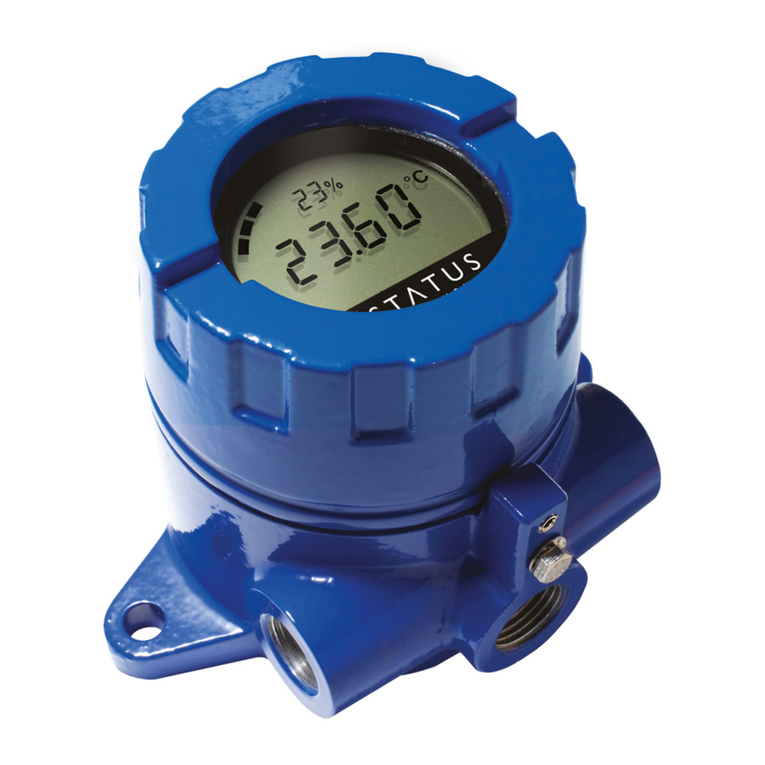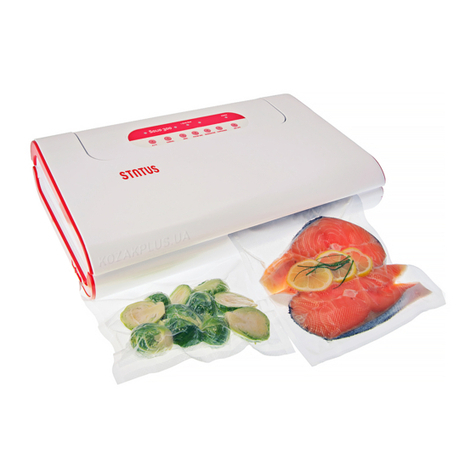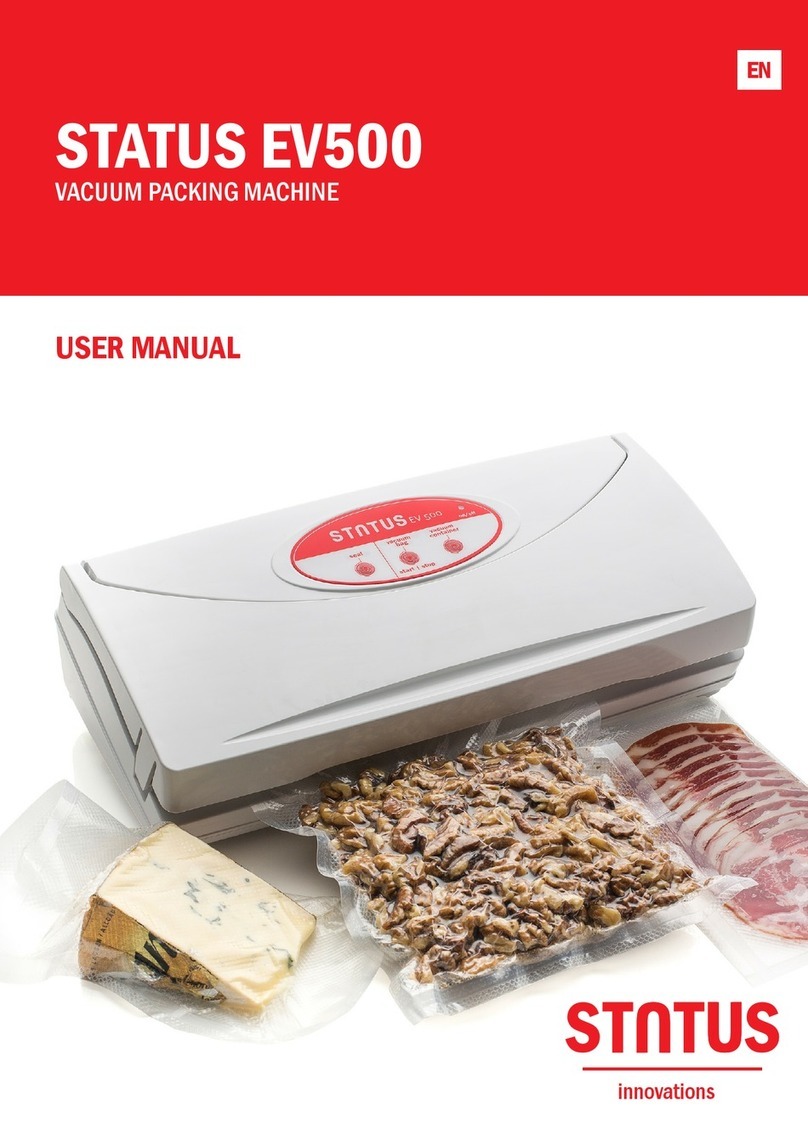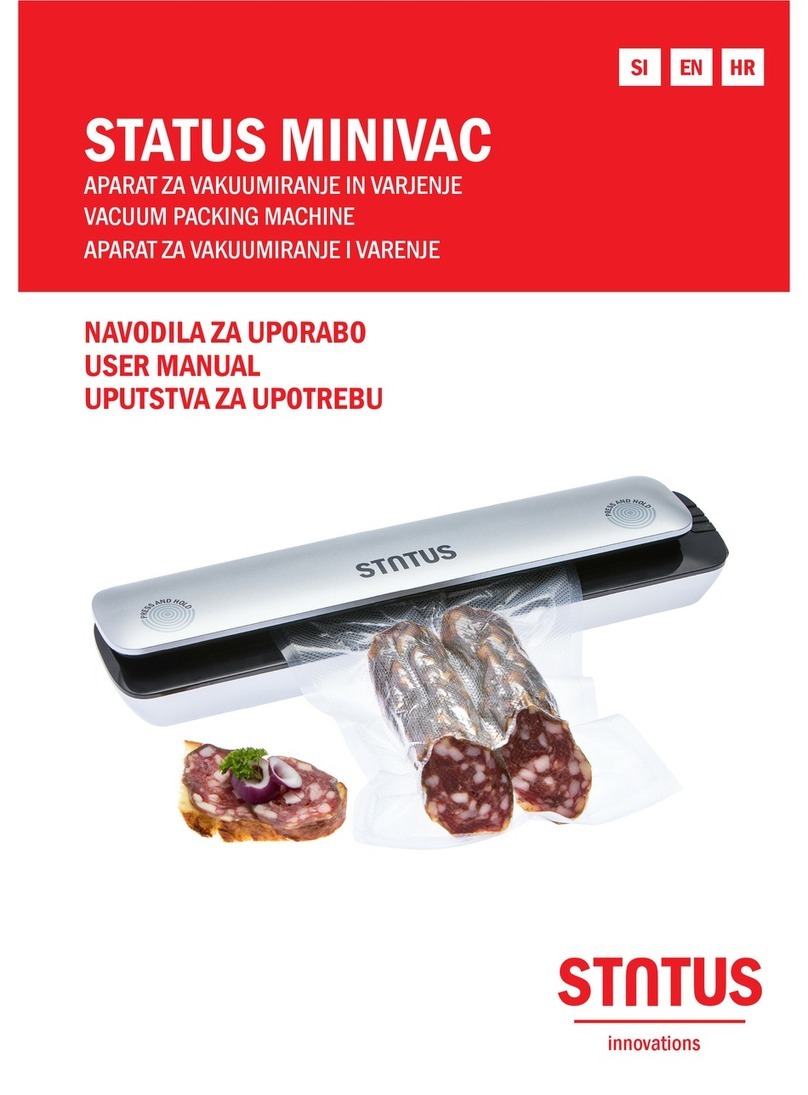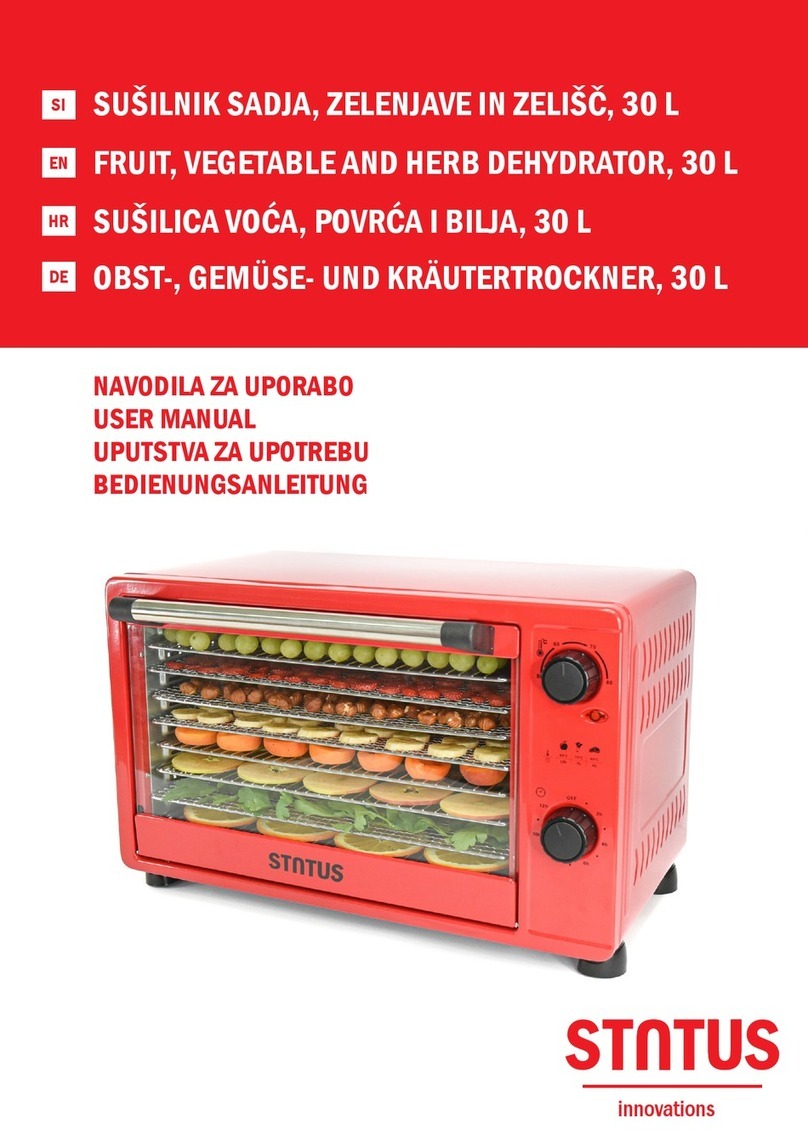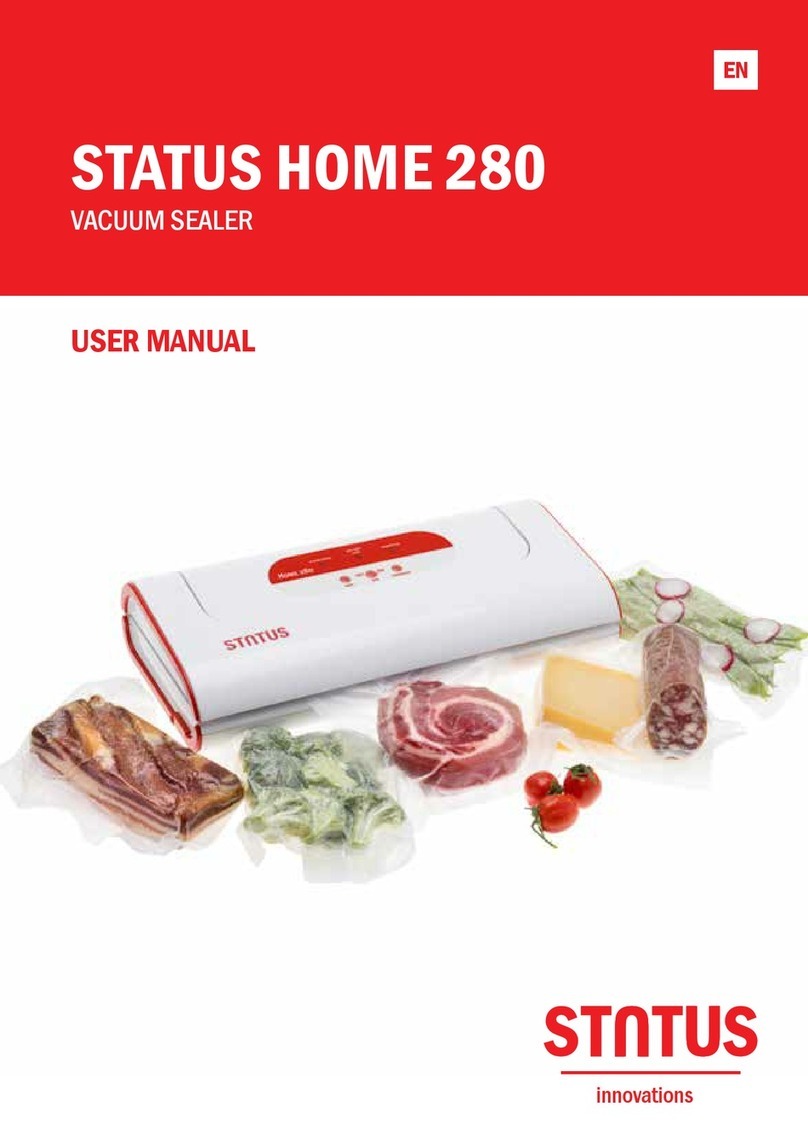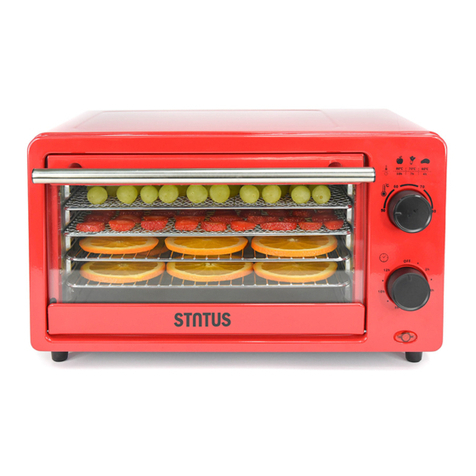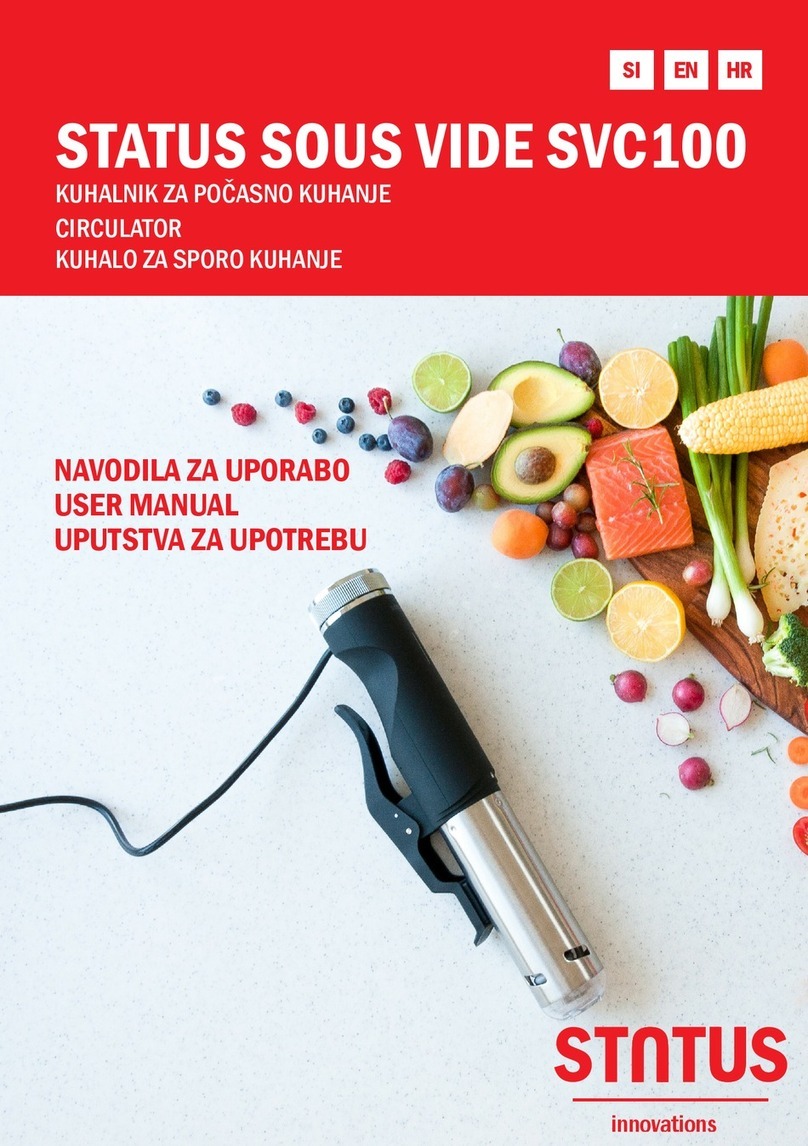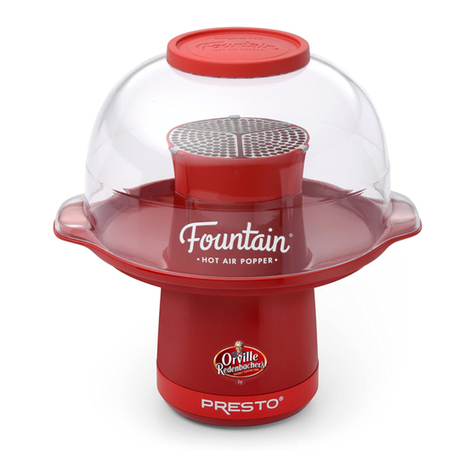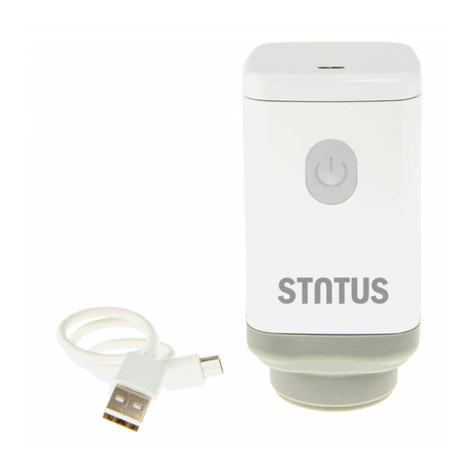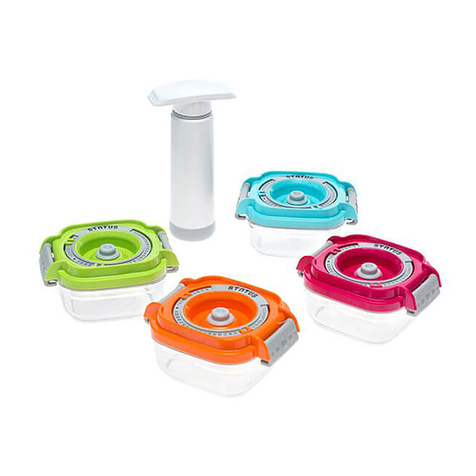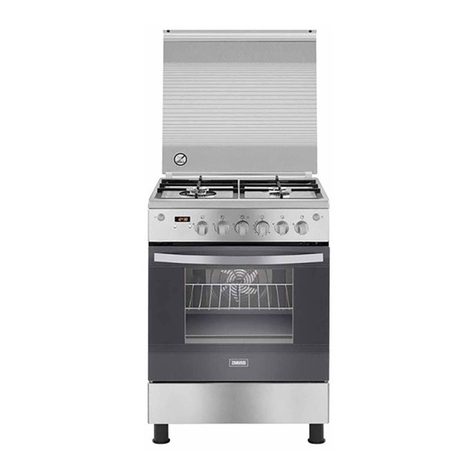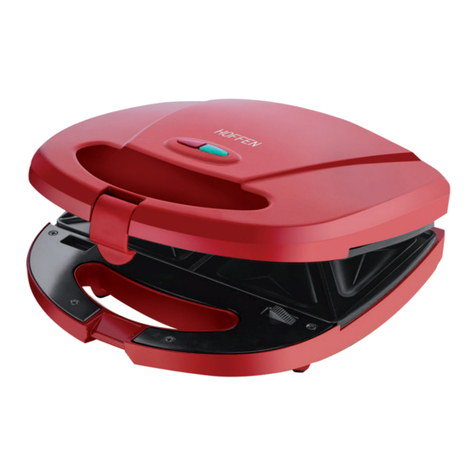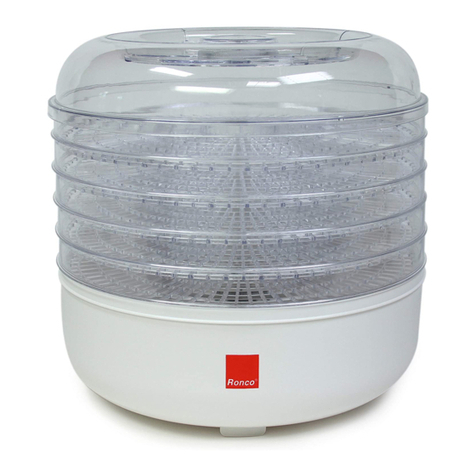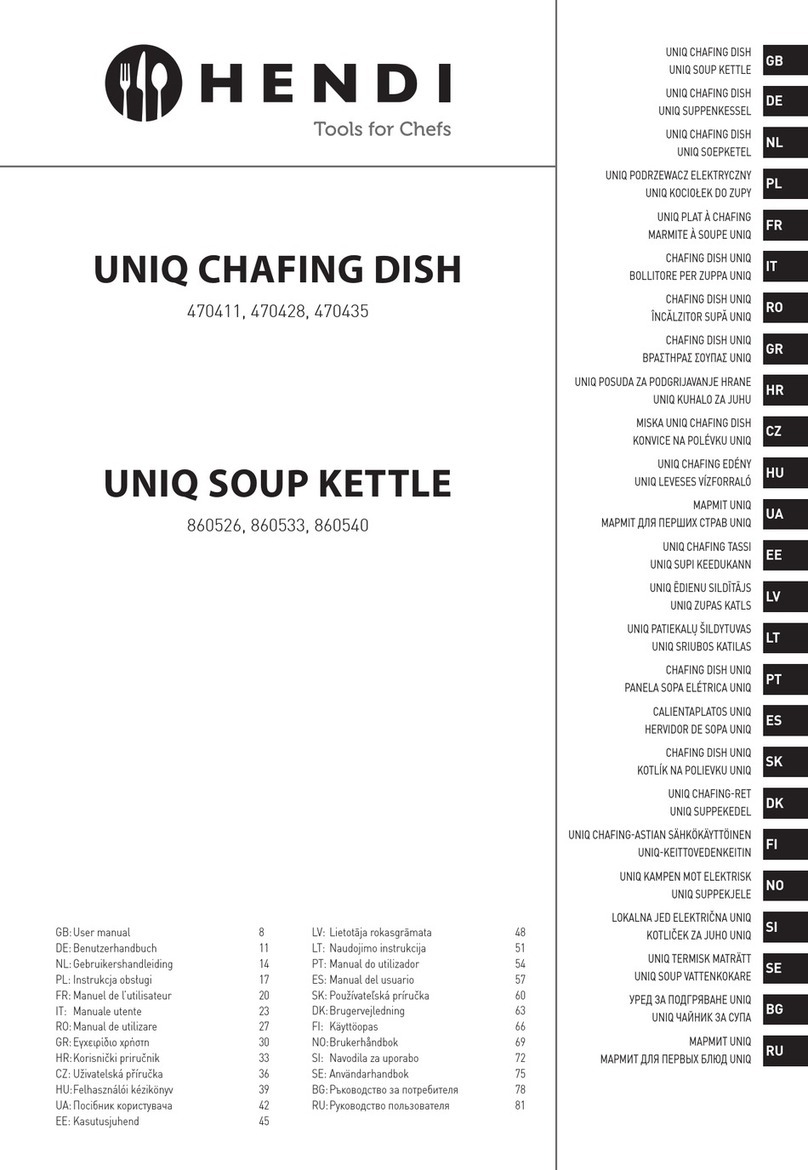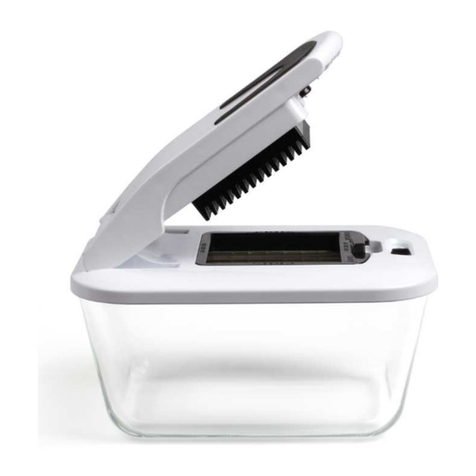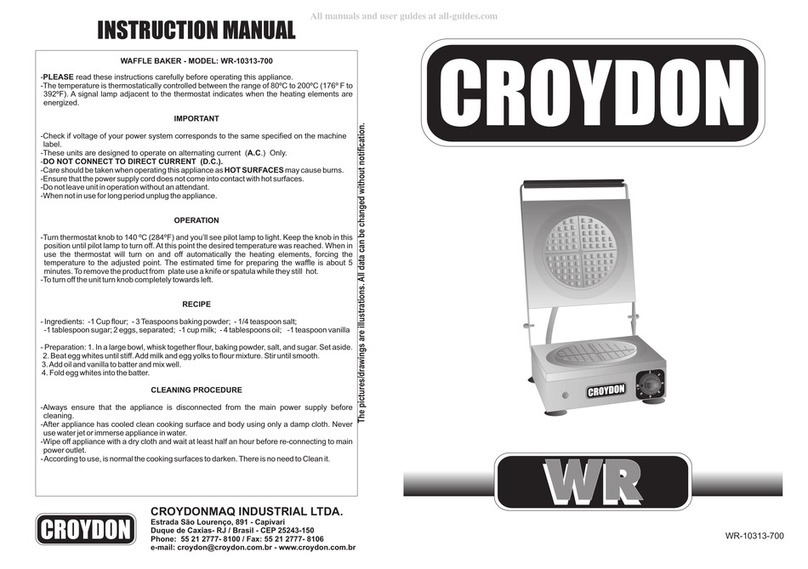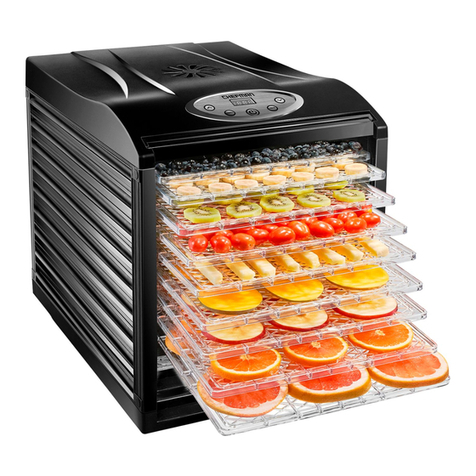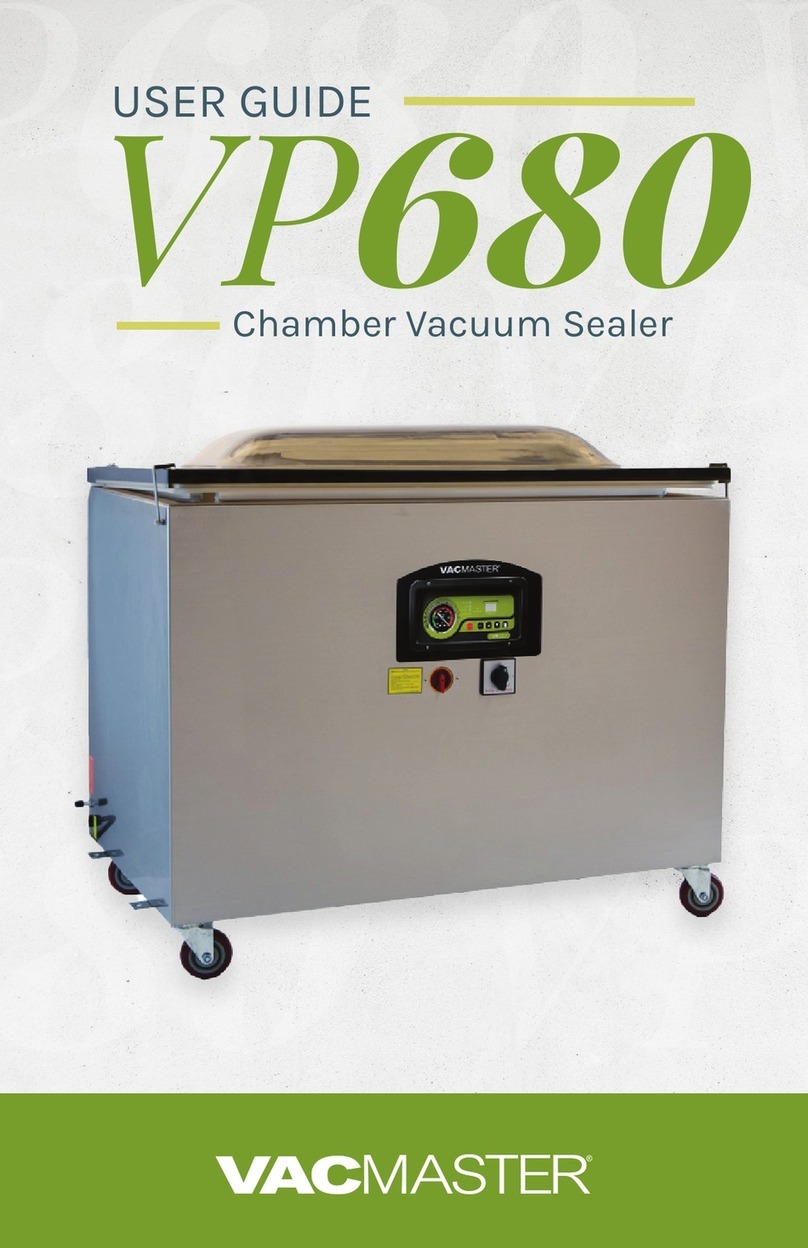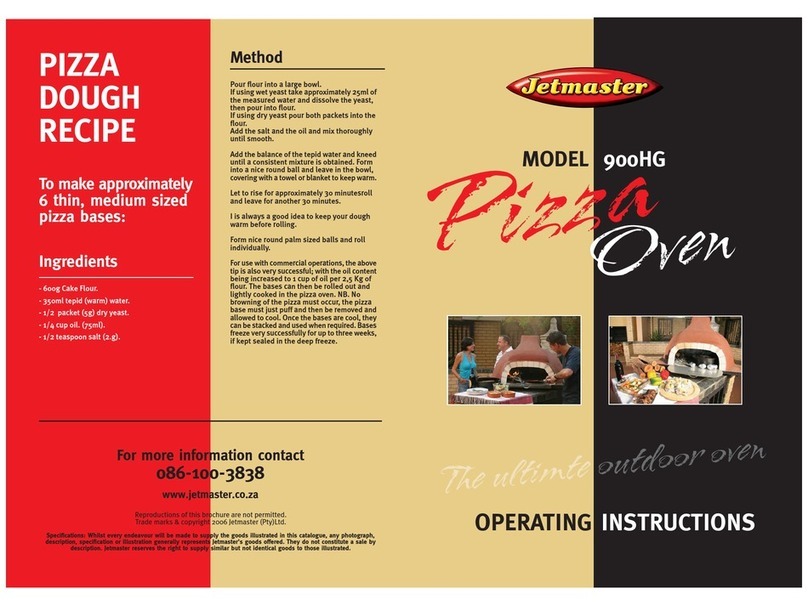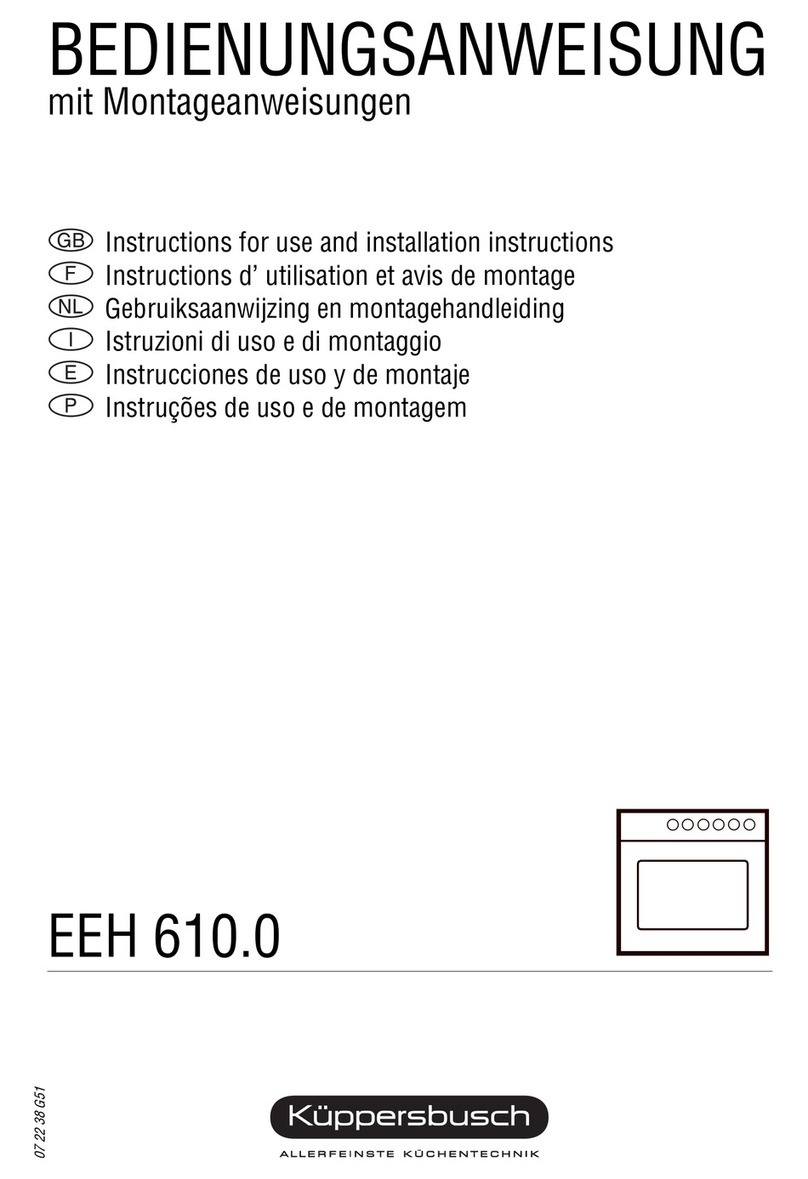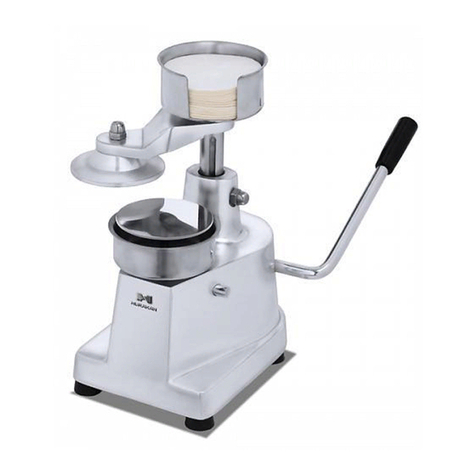
8
Boiled meat, raw meat and sh: For best results we
recommend you to pre-freeze meat and sh for 1-2
hours prior to vacuum packing to ensure the retenti-
on of juices and shape, and to help guarantee a good
seal. If pre-freezing is not possible, place a folded
paper towel between the meat and the top of the bag,
avoiding the area to be sealed. Leave the paper towel
in the bag when vacuum packing to absorb excess
moisture and juices.
Note: Beef may appear darker after vacuum packing
due to the removal of oxygen. However, this does not
indicate it is spoiled.
Vegetables: When storing in the refrigerator vegetables
should be blanched prior to vacuum packing. When
freezing the blanching is optional. The process of blan-
ching stops the enzyme action and preserves avour,
colour and texture. One to two minutes in boiling
water is enough for fresh leaf vegetables or beans.
For chopped zucchini or broccoli and other cruci-
ferous vegetables allow 3 to 4 minutes, for carrots
allow 5 minutes. After blanching, submerge the
vegetables in cold water to stop the process then dry
them with a paper towel prior to vacuum packing.
We recommend you to store leaf vegetables in vacuum
containers.Theyshouldrstbewashedanddriedwith
a paper towel, and then stored in a vacuum container.
This way, spinach and lettuce will stay fresh up to 2
weeks when refrigerated.
Herbs: Herbs containing a high portion of essential oils,
such as sage, thyme, rosemary or peppermint are not
suitable for vacuum packing but only for drying. Basil,
tarragon, garden dill, parsley and chive should be fro-
zen.Ifdried,theylosetoomuchavour.
Mushrooms, raw garlic and raw potatoes: We stron-
gly recommend the "manual vacuum packing" function.
Only hard, meaty and fresh mushrooms are suitable
for vacuum packing and freezing. First wash and dry
themushrooms,thenchopthemwithaneknifeand
store them in small quantities. Almost all types of mu-
shrooms should be blanched. We recommend that you
put them in the freezer for half an hour before vacuum
packing. Do not thaw the mushrooms before preparing
them. Boil frozen mushrooms in hot salty water or add
them to sauces.
Coffee: If you want to properly vacuum package coffee
or other ground food with Minivac, leave the items in
their original packaging and place them into the Status'
bag. If you do not have the original packaging, use a
regular bag and insert it in the Status' bag. This way you
can prevent beans or ground items from being sucked
into the machine.
Thawing of vacuum packaged foods: Foods should
always be thawed in the refrigerator to preserve quality.
4. BENEFITS OF VACUUM PACKING
4.1. WHAT IS VACUUM?
Oxygen provokes a chemical change on food and is
an important factor in the formation of moulds and
bacteria. As a consequence, grease can go
rancid, food colour changes, moulds and bacteria
multiply, and avour, vitamins, aroma and minerals
are lost. Vacuum packing holds up such undesired
effects, prolongs shelf life and preserves food quality.
Only with the help of vacuum packing, i.e. removing
air from packing using manual or pump, a suitable
environment required to extend food freshness can
be established. The process of vacuum packing in
containers or bags creates negative pressure.
Signs of freezer burn are rancid meat, rotten
vegetables and tasteless fruit. Freezer burn appears,
when the packaging is permeable to air (common 1
ply PE bags) and frozen food comes into contact with
oxygen. Consequently, water evaporates and the surface
of frozen food dries out. Oxygen penetrates through the
porous cracks and initiates oxidation. As a consequence,
food loses its aroma and fresh taste. We can recognize
freezer burn by the white and dun stains on the food.
4.2. WHAT IS FREEZER BURN?
